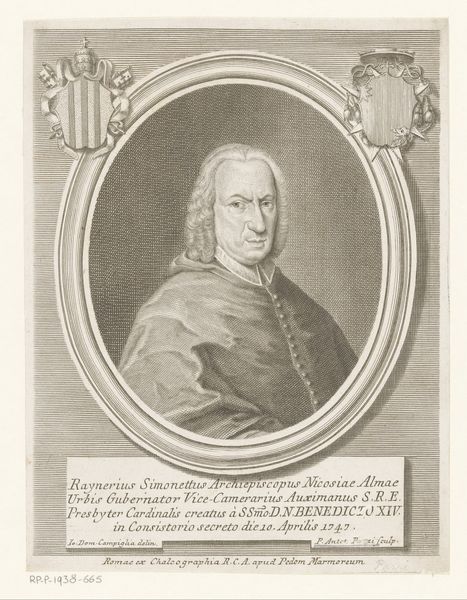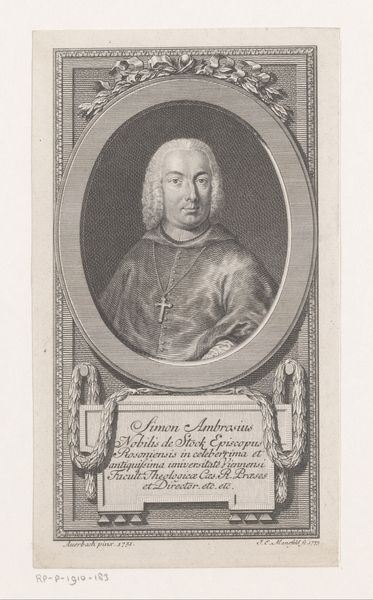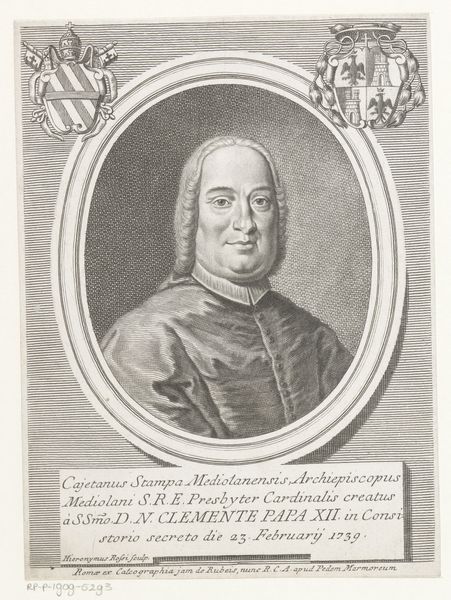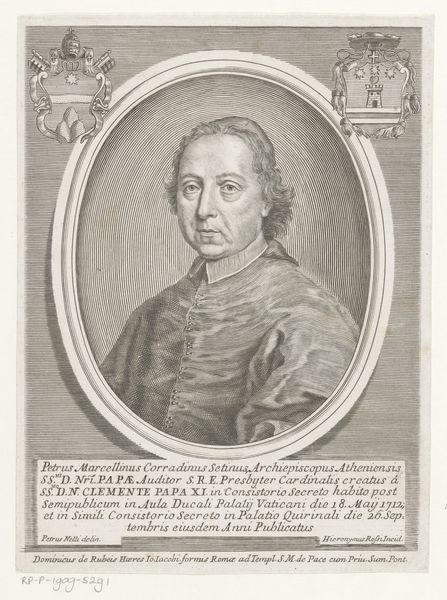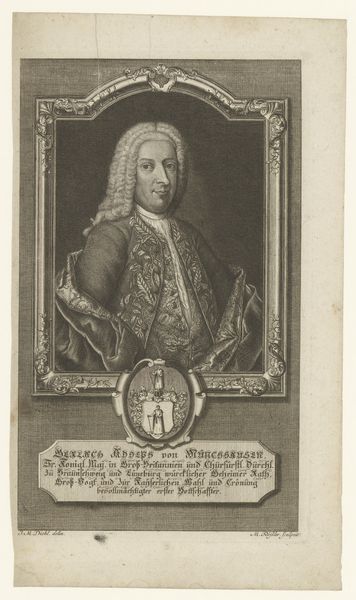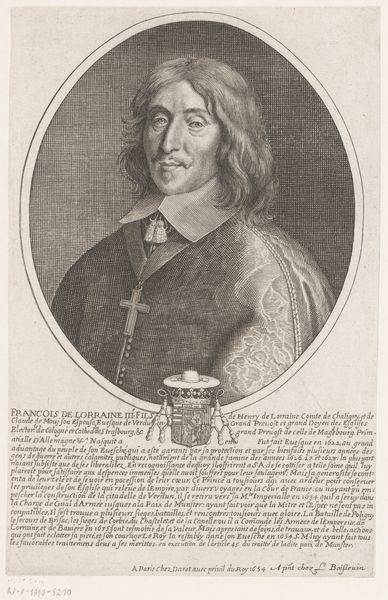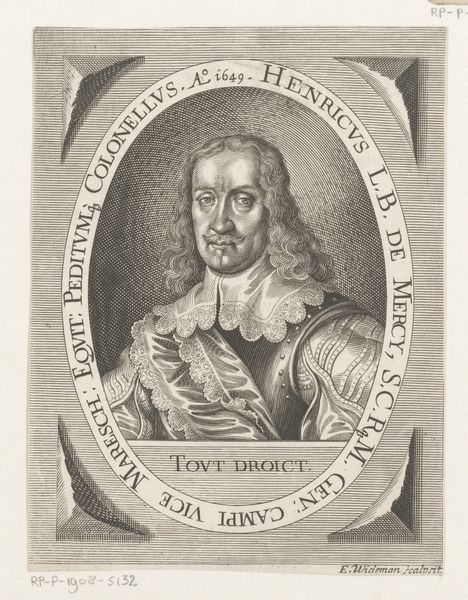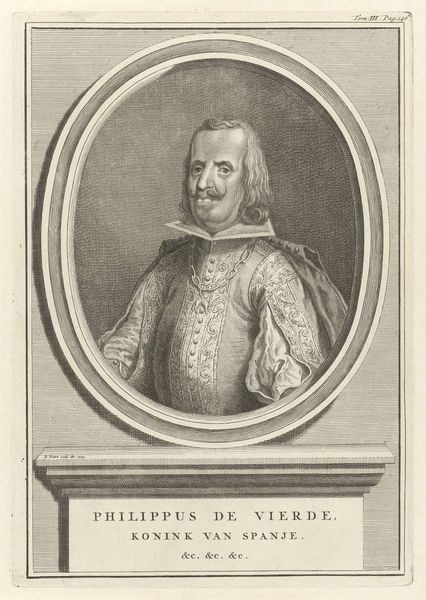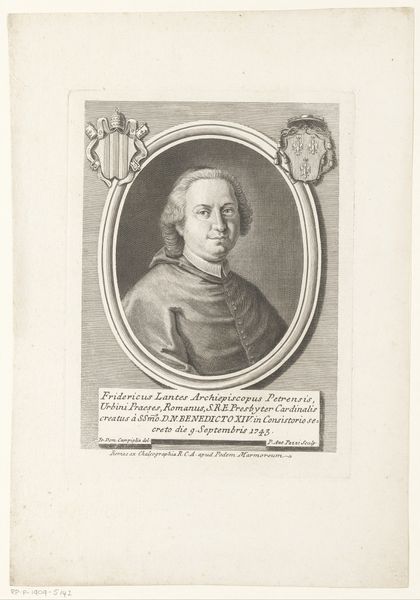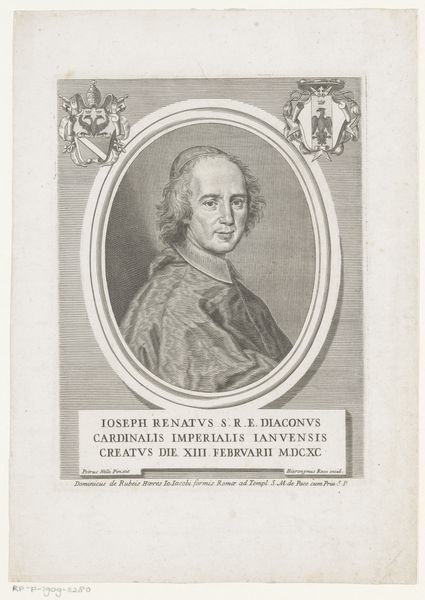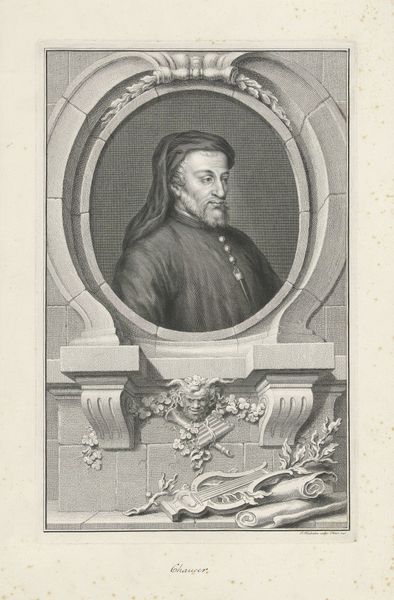
engraving
#
portrait
#
baroque
#
old engraving style
#
history-painting
#
italian-renaissance
#
engraving
Dimensions: height 217 mm, width 159 mm
Copyright: Rijks Museum: Open Domain
This portrait of Cardinal Nuno da Cunha e Ataíde was made by Giovanni Girolamo Frezza, likely in the early 18th century. It's an engraving, meaning the image was incised into a metal plate, inked, and then printed onto paper. The fine lines that define the Cardinal’s face and robes are a testament to Frezza’s skill, a master craftsman of his time. Notice how the varying density of the lines creates areas of light and shadow, giving the portrait depth and realism. Engraving was a labor-intensive process, demanding precision and control. It was also a means of reproducing images, making them more widely accessible. In this context, consider the social implications of this portrait. While the Cardinal represents the powerful elite, the engraving itself reflects the skilled labor of artisans and the emerging dynamics of image production and distribution. This piece is a reminder of the intricate relationship between art, labor, and social status in the early modern world.
Comments
No comments
Be the first to comment and join the conversation on the ultimate creative platform.
